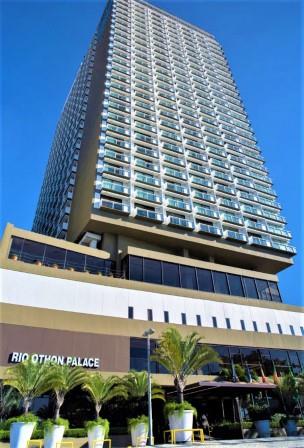ORALS
SESSION: IronTuePM1-R1
| Afonso International Symposium on Advanced Sustainable Iron and Steel Making(6th Intl. Symp. on Advanced Sustainable Iron and Steel Making) |
| Tue Nov, 6 2018 / Room: Mar Azul (50/1st) | |
| Session Chairs: Hemant Upadhyay; Shambhu Nath; Session Monitor: TBA |
14:00: [IronTuePM105]
Importance of Coke Quality and Optimization for Higher Pulverized Coal Injection Rates in Blast Furnace Hemant
Upadhyay1 ; Deepesh
Chandra
1 ; Arvind
Bhagat
1 ;
1Jindal Steel and Power Ltd, Raigarh, India;
Paper Id: 172
[Abstract] Coke is a fuel with few impurities and high carbon content. It is the solid carbonaceous material derived from destructive distillation of low-ash, low-sulfur bituminous coal. Coke is the most important factor in blast furnace iron making, which provides heat, reactants, and mechanical support to burden, and accounts for more than 50% of hot metal production cost alone. In modern blast furnace operational practices significant efforts are made to decrease the costly coke consumption mainly by introducing cheaper coals in pulverized form through tuyeres. This alters the in-furnace aerodynamics, reduction conditions, burden distribution and demands on raw material, particularly coke, quality. Therefore coke quality such as its hot and cold strength, reactivity, composition, size fraction and granulometry etc. exerts great influence on the performance of blast furnaces. With increasing productivity & pulverized coal injection, the quality requirement becomes more and more stringent. This is due to the fact that ascending injection rates cause descend in coke unit per charge and the function of coke from being thermal, chemical and mechanical equally shifts to become predominantly mechanical. Hence, in order to maintain stable operation with higher rates of performance, it is important to have lowest possible degradation of coke during its travel from top to bottom of the furnace. This in turn demands proper understanding of the conditions coke has to face in the BF (i.e. effect of alkali, lime, other oxides, char/dust & reactions with surrounding gases) and mechanisms of fines generation & consumption in the blast furnace.
In this work, a study on the role of coke and its functions in traditional as well as modern high PCI furnace operations, has been made. The mechanisms inducing and affecting coke degradation have been investigated and correlated with the actual experience from one of the best blast furnaces operating in the world.
SESSION: IronTuePM1-R1
| Afonso International Symposium on Advanced Sustainable Iron and Steel Making(6th Intl. Symp. on Advanced Sustainable Iron and Steel Making) |
| Tue Nov, 6 2018 / Room: Mar Azul (50/1st) | |
| Session Chairs: Hemant Upadhyay; Shambhu Nath; Session Monitor: TBA |
14:25: [IronTuePM106]
Development and Application of Mathematical Models to Simulate Liquid Phase Accumulation, Drainage, and Heat Transfer in Blast Furnace Hearth Hemant
Upadhyay1 ; Deepesh
Chandra
1 ; Tarun Kumar
Kundu
2 ;
1Jindal Steel and Power Ltd, Raigarh, India;
2Department of Metallurgical and Materials Engineering, Kharagpur, India;
Paper Id: 173
[Abstract] Proper understanding and control of accumulation, drainage, and heat transfer of hot metal and slag in BF (Blast Furnace) hearth is essential for a stable and efficient blast furnace operation. Abnormal drainage behavior may lead to high liquid build up in the hearth. Operation problems are normally encountered if the liquid levels exceed a critical limit when hearth coke and deadman start to float. This not only causes sluggish or irregular descent of burden material, but also results in irregular casting intervals, damage to lining, low blast intake, and furnace pressurization. Similarly, hot metal temperature is an important parameter to be controlled in the BF operation; it should be kept at an optimal level to obtain desired product quality and a stable BF performance. Predicting hot metal temperature variation during the tapping process is extremely useful, since it gives a clear picture to the operator about the tapping operation and prevents any panic. At the same time, it allows the correction of process parameters in case of any major deviation. If the metal temperature is too high or too low, it may directly affect the process and cost efficiency of BF as well as BOF (Basic Oxygen Furnace) plants. Efforts have continuously been made for BF process optimization to improve its productivity, energy efficiency, environment, and product quality. The control of the hot metal / slag accumulation, drainage pattern, and tapping temperature is of great importance for optimizing the BF process and making it productive, energy efficient, and cost competent. Therefore, it is utmost important for furnace operators to understand the mechanisms governing the liquid flow, accumulation, drainage and heat transfer between various phases in BF hearth. As it's extremely difficult to carry out any direct measurement due to the hostile conditions in the hearth with chemically aggressive hot liquids, estimation, and simulation based on rules of physics and mathematical calculations, taking into account available operating parameters is the only viable solution. The objective here is to develop a mathematical model to simulate the variation in hot metal/slag accumulation and temperature during the taping of the furnace, based on: the computed drainage rate; production rate; mass balance; heat transfer between metal and slag, metal, and solids; slag; solids; as well as the various zones of metal and slag itself. [1,3,4]
References:
[1] Hemant Upadhyay and T. K. Kundu, "Drain Rate and Liquid Level Simulation in Blast Furnace Hearth Using Plant Data," ISRN Metallurgy, vol. 2013, Article ID 960210, 7 pages, 2013. doi:10.1155/2013/960210
[2] Johnny Brännbacka and Henrik Saxén, Modelling the Liquid Levels in the Blast Furnace Hearth, ISIJ International, 2001, Vol-41, No.10, Pg No. 1131-1138
[3] W.B.U. Tanzil, P. Zulli, J.M. Burgess, and W.V. Pinczewski, Experimental Model Study of the Physical Mechanisms Governing Blast Furnace Hearth Drainage, Transactions ISIJ, 1984, Vol-24, Pg No. 197-205.
[4] J. Brännbacka, J. Torrkulla, H. Saxén, Ironmaking Steelmaking, 2005, 32, 479-486.
[5] T. Nouchi, M. Sato, K. Takeda, T. Ariyama, ISIJ Int., 2005, 45, 1515-1520.
[6] Koki NISHOKA, Takayuki MAEDA, Masakata SHIMIZU, Effect of various in furnace conditions on Blast Furnace hearth drainage, ISIJ International, 2005, Vol-45, No.10, Pg No. 1496-1505.
[7] W.M. Husslage, M.A. Reuter, R.H. Heerema, T. Bakker, and A.G.S. Steeghs, Flow of Molten Slag and Iron at 1500°C to 1600°C through Packed Coke Beds, Metallurgical and Materials Transactions, 2005, Vol-36B, No.10, Pg No. 765-776.
[8] W.B.U. Tanzil and W.V. Pinczewski, Blast Furnace Hearth Drainage: Physical Mechanisms, Chemical Engineering Science, 1987, Vol-42, NO. 11, Pg No. 2557-2568.



















